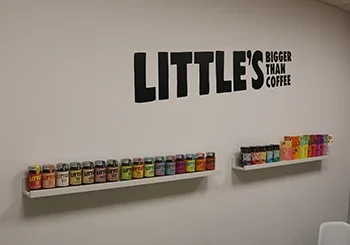4 Tips For Perfectly Applying Labels Every Time
Creating a great-looking, well-designed label is only half the job — how that label is applied to your product is equally important. A poorly applied label can instantly affect how customers perceive your product. It can make packaging look rushed, inconsistent, or low in quality — even if what’s inside is excellent.
Whether you’re applying labels by hand or using labelling machinery, consistency and precision are key. As specialists in labelling equipment and automation, we’ve seen first hand how small adjustments can make a big difference. Here are four essential tips to help you achieve perfect label application every time.
Prepare Your Surface
Before applying a label, make sure you’ve planned where it should be placed on your product. Ideally, this positioning should be determined during the label design stage, so your label size and shape are optimised for the container.
Flat, smooth surfaces are always the best choice when possible. Labels adhere most effectively when there are no ridges, curves, or bumps disrupting the application area. Before applying the label, ensure the surface is completely clean, dry, and free of any dust, oils, or residue. Even minimal contamination can affect the bond of the adhesive and lead to peeling or bubbling.
If your products are coming straight off a clean production line, this should be relatively straightforward. But for items handled manually or stored in non-sterile environments, a quick wipe-down with a dry, lint-free cloth or mild cleaning solution might be needed.
Ensure Your Labels Are Room Temperature
Label adhesive performance is heavily influenced by temperature. Many businesses aren’t aware that cold or overly warm labels can impact adhesion quality.
If your labels are stored in a warehouse, garage, or delivery bay, they might be cooler than room temperature — especially during colder months. Before applying labels or feeding them into your labelling machine, make sure they’ve had time to acclimate to a stable indoor temperature.
This tip applies whether you’re using manual methods, a semi-automatic label applicator, or a fully automated labelling system. For applications in environments with consistently low or high temperatures (like refrigerated storage), you may need to use specialist adhesives designed for those conditions.
Position Your Label Carefully
This tip is especially relevant if you’re still labelling products manually or using a handheld applicator. Precision is critical when placing labels by hand, and even a slight misalignment can affect the professional finish of your product.
If the container has an uneven surface or is cylindrical in shape, aligning the label correctly becomes more challenging. Take your time, use visual markers or guides if possible, and apply even pressure across the label to avoid creases or bubbles.
With labelling machines, this concern is removed, as label positioning is handled automatically using calibrated settings and product sensors. If you’re labelling larger batches or struggling with consistency, switching to a semi-automatic or automatic labelling solution could significantly improve your results.
Give Labels Time To Cure
Label adhesive doesn’t always bond instantly. While some pressure-sensitive adhesives create an immediate stick, many require up to 72 hours to fully cure and form a lasting bond with the product surface.
During this curing period, it’s important to avoid excessive handling, movement, or exposure to extreme temperatures or moisture. Otherwise, the label may lift at the edges, wrinkle, or even detach entirely.
If you’re packaging and shipping products immediately after labelling, consider setting up a holding area to let freshly labelled items rest undisturbed. Allowing this short window ensures the adhesive cures properly and your labels stay firmly in place through transport and storage.
Achieve Consistent, High-Quality Labelling Every Time
Whether you’re using manual techniques or operating a high-speed labelling machine, following these simple but important tips can help prevent labelling errors and maintain a consistently professional product appearance.
If you’re finding manual application too time-consuming, inaccurate, or inconsistent, it may be time to consider upgrading to a semi-automatic or automatic labelling machine. At Atwell Labellers, we can help you find the right system based on your product type, volume, and budget — ensuring you get the perfect finish, every time.
If you are looking for a labelling machine for your products, or want to find out more about how to use labelling machinery successfully, contact our team of specialists.
Can we help you?
Technical Helpline
Contact by Telephone:
+44 (0)1444 237 804


